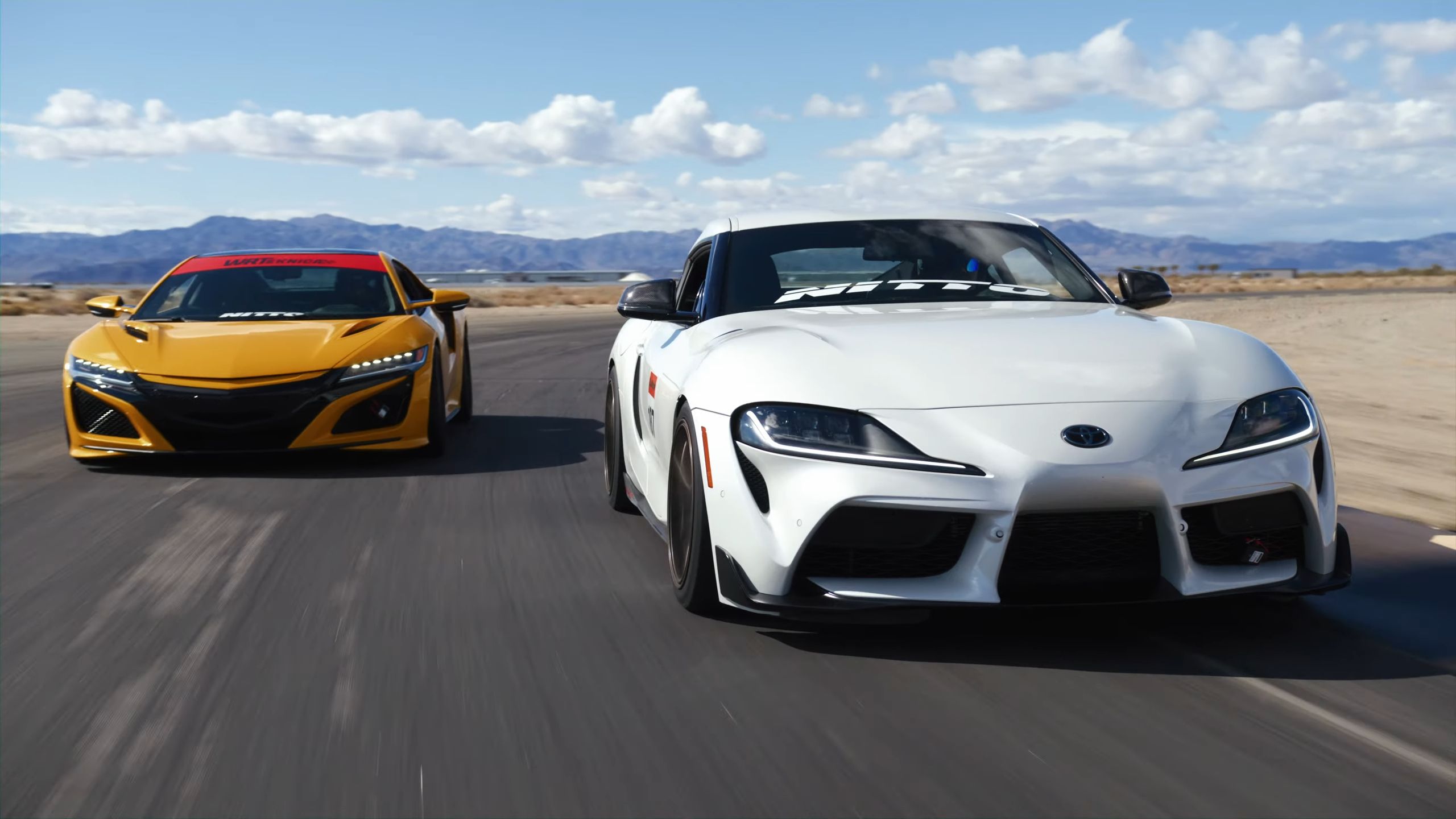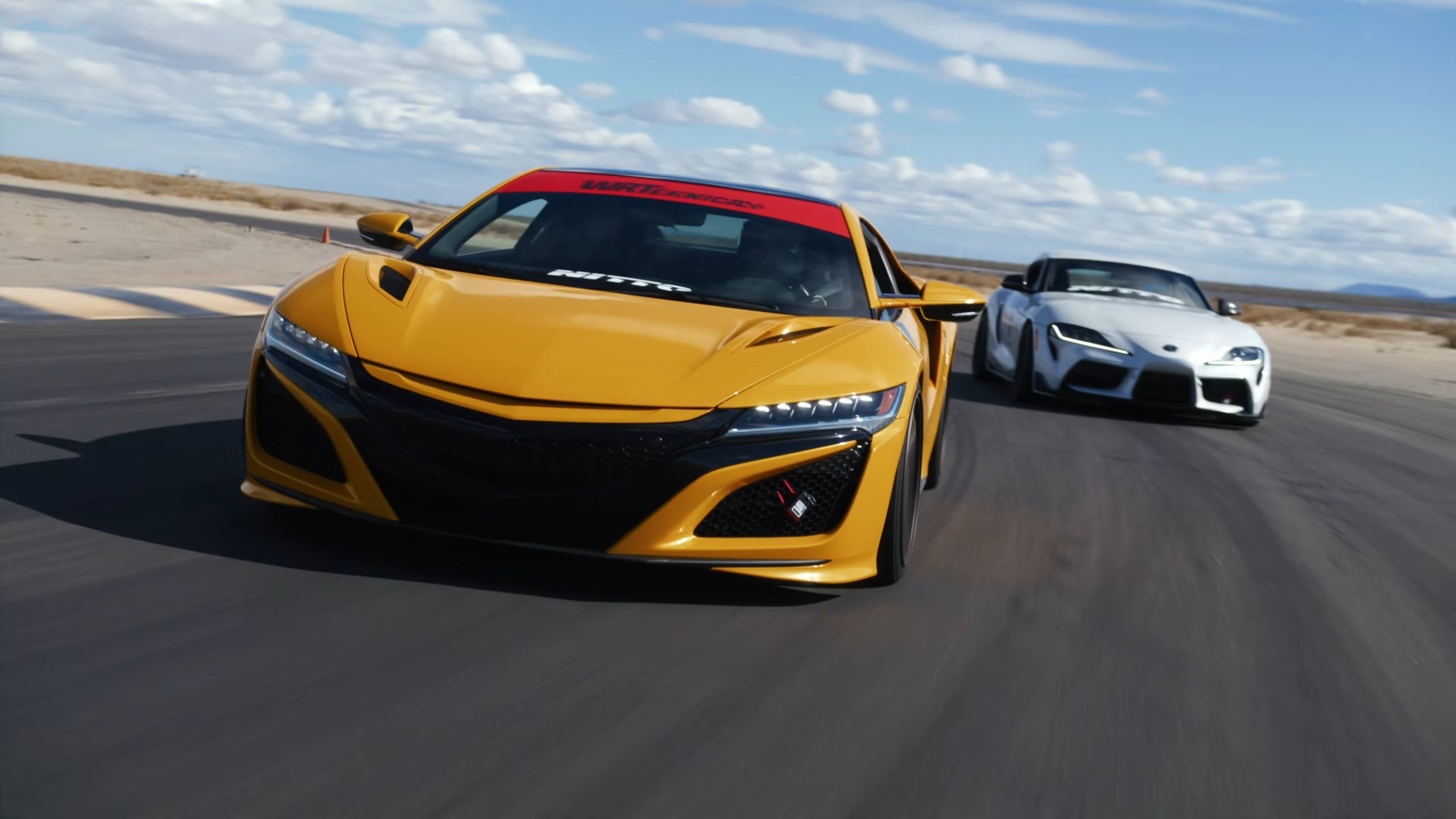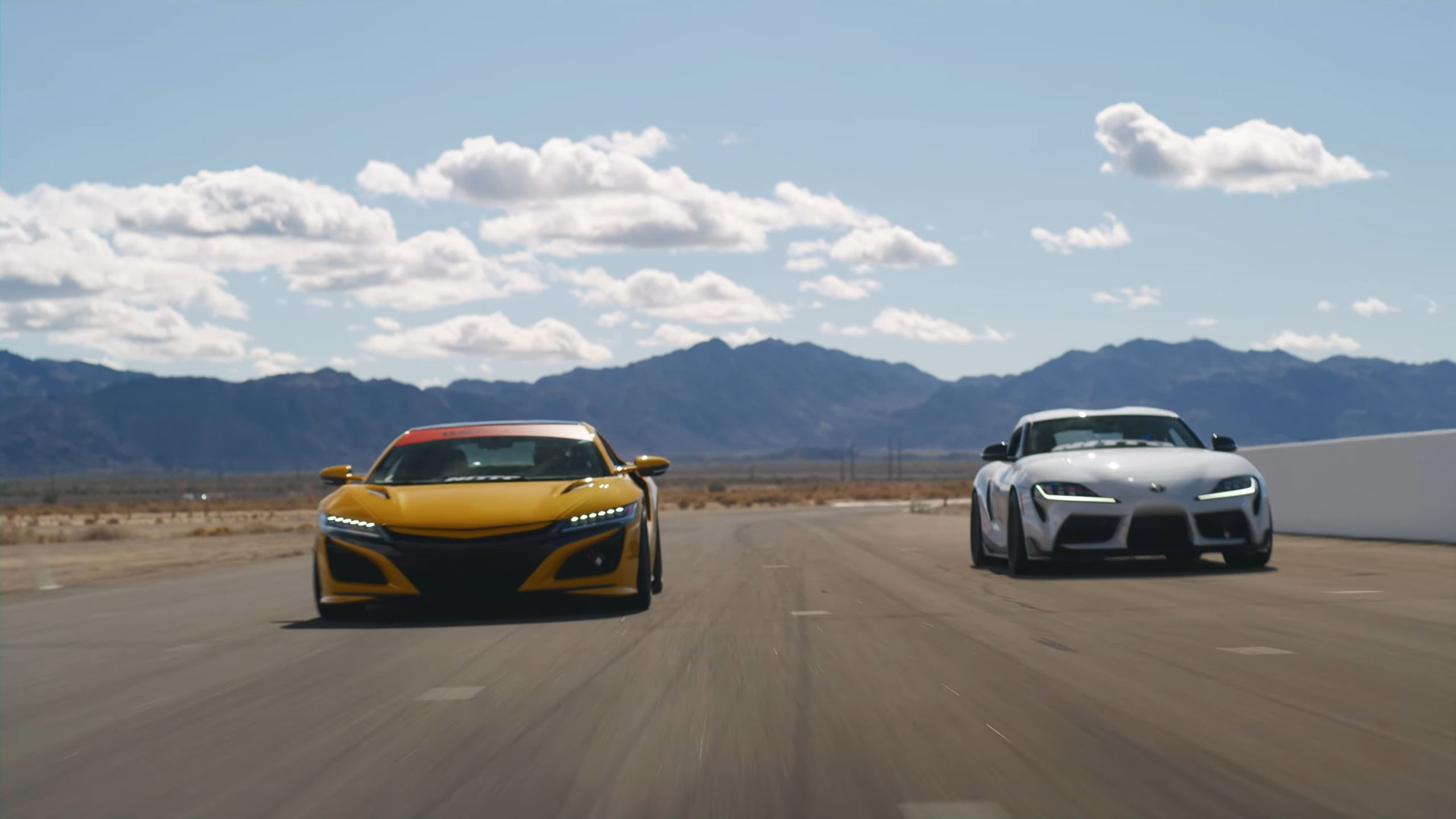Track battles are where performance cars are really put through the test and Driving Line has staged another one. This time it’s an all-JDM track battle between a Toyota GR Supra and an Acura NSX. Both cars are mildly modified and run on the same Nitto NT01 tires to make it as fair as possible while lapping the Chuckwalla raceway.
Toyota GR Supra
In stock form, the GR Supra puts out 382 horsepower (it’s, actually, a bit more) and 368 pound-feet (499 Nm) from its 3.0-liter turbocharged inline-six engine. Power goes to the rear through a ZF, eight-speed automatic. With a curb weight of just over 3,300 pounds (1,500 kg), the GR Supra is relatively lightweight.
Modifications include an upgraded downpipe, valve exhaust, H&R springs, upgraded brakes, and Titan 7 T-R10, 18x10.7-inch wheels.
Acura NSX
The NSX’s hybrid powertrain revolves around a 3.5-liter twin-turbo V-6. The system’s power output is rated at 573 horsepower and 476 pound-feet (646 Nm). All that is managed by Acura’s Super Handling all-wheel-drive system and a nine-speed dual-clutch automatic. Curb weight comes in at around 3,830 pounds (1,740 kg).
Modifications include an upgraded downpipe and exhaust by Fabspeed, JB4 tune, Eibach springs, upgraded brake rotors, and Volk Racing TE37 Ultra M wheels.
The race
Chuckwalla Raceway is 2.68 miles (4.31 km) long and has 17 corners, almost all of which are high-speed. The NSX has an obvious horsepower advantage, but its driver has fewer hours spent on the track. The GR Supra is lighter and with a driver that has more time spent on a racetrack, the playing field is equalized.
After plenty of hot laps, the GR Supra managed a best time of 2:08 minutes while the Acura NSX managed a best time of 1:59.8 minutes, supposedly, in limp mode. The GR Supra is known to punch above its weight, but the power of the NSX proved too much. That said, at the point of reading this, the NSX’s ECU still hasn’t been cracked, so tuning is very limited.




